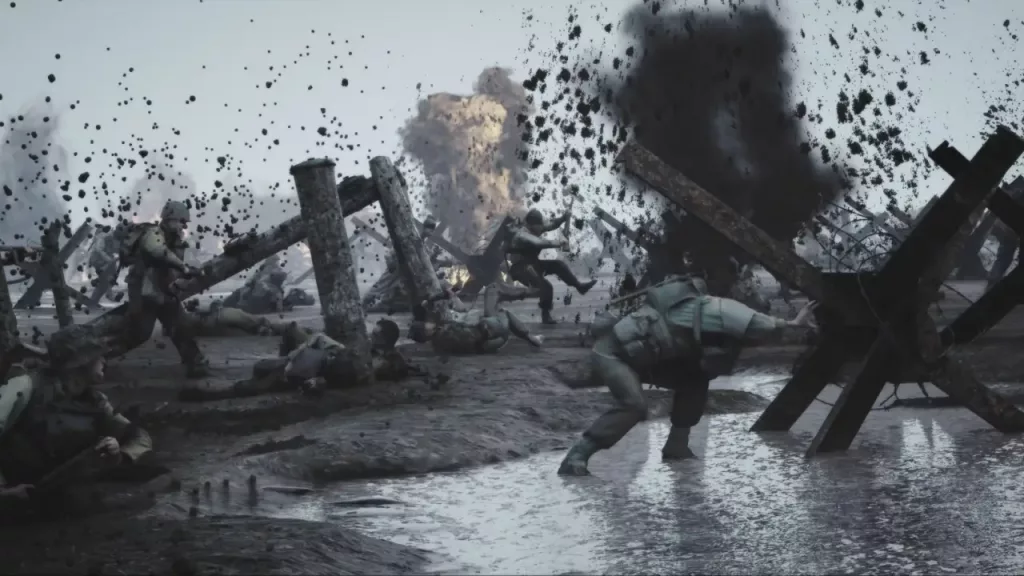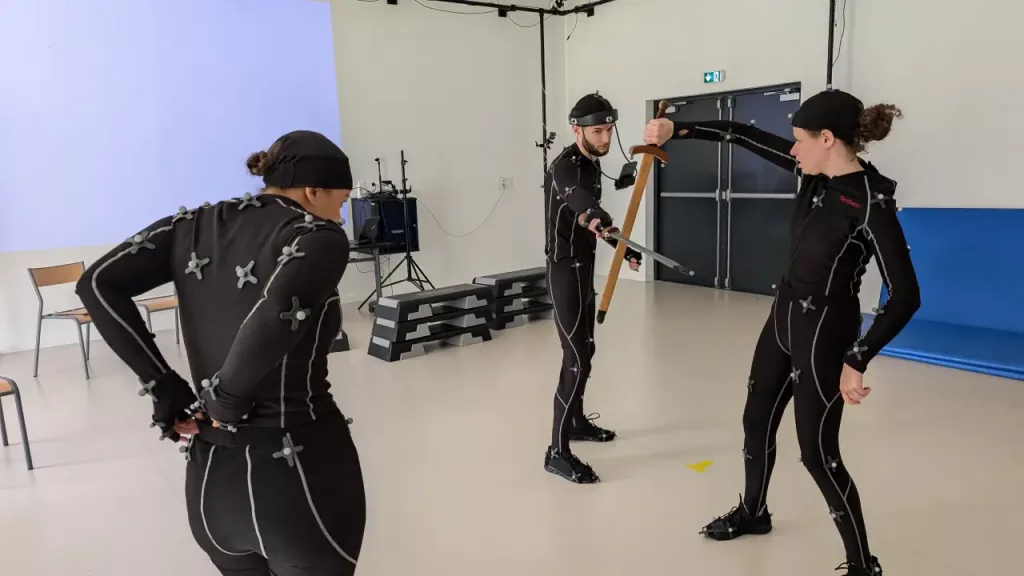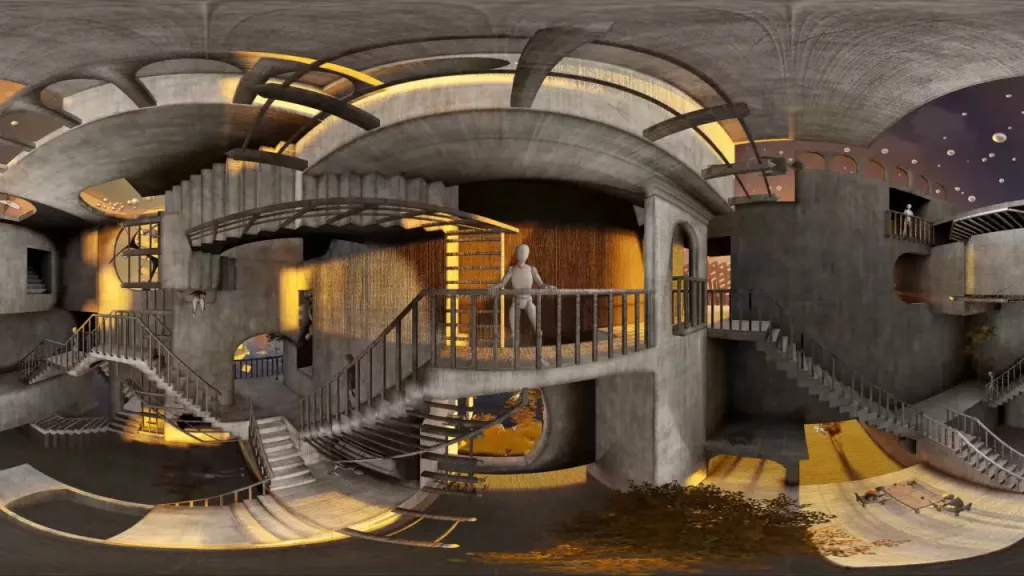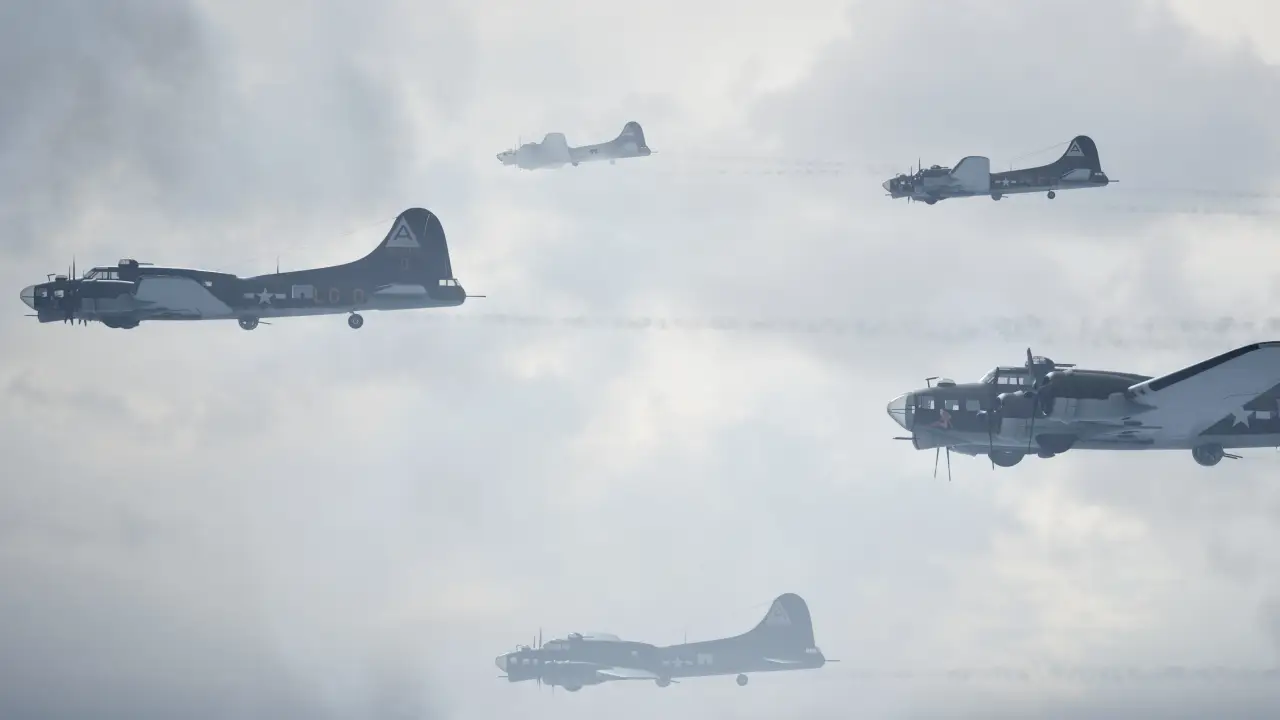Originally, Ride FX was supposed to produce films for amusement parks—hence the name, inspired by Futuroscope-style rides. Covid struck in the year the company was founded, major contracts fell through, and the studio had to reinvent itself at lightning speed. The door that opened was cinema: in just a few years, Ride FX became one of the few studios in Brittany to combine post-production, VFX, and 3D animation, working on feature films such as Ghost Trail by Jonathan Millet (Critics’ Week 2024), Yes by Nadav Lapid (Directors’ Fortnight 2025), and Redress by Régis Wargnier (2025).
Cover: ECHOES OF BRAVERY – OMAHA VR
This detour into cinema is not a mere interlude: it anchors the studio in a culture of screenwriting, directing, and visual precision. But as Elia Vermander himself says, his interest is gradually shifting toward immersive scenography. Ride FX is restructuring, recruiting, setting up a hangar to test VR devices, building a mocap studio, and refocusing its energy on projects where we no longer simply “illustrate” a story: we bring it to life in a space.
Omaha Beach in VR: a memory at visitor height
Among recent projects, ECHOES OF BRAVERY – OMAHA VR occupies a key place. Created for the D-Day Omaha Museum in Vierville-sur-Mer, the experience offers an 8K VR360 reconstruction of the Normandy landings on Omaha Beach, designed to be experienced on site, at the heart of a place of remembrance. Viewers go through different phases of the operation, getting up close to the Allied fleet and German defenses, in a linear seven-minute experience accessible to ages 12 and up.


Technically, the project combines photogrammetry of the beach, actors in costumes, 3D reconstruction, and archives, with a requirement for historical accuracy claimed by both the museum and the studio. But Ride FX’s interest goes beyond graphic performance. The team is working with the museum on the context: physical objects presented beforehand, mediation around VR, and the visitor’s journey before and after the projection. The experience is not limited to the headset; it is part of a museum tour designed for families as well as history buffs.
The economic model also reveals the studio’s strategy: co-production with the institution, sharing of costs and rights, and the possibility for Ride FX to subsequently distribute the work in other locations—particularly in the United States, where Omaha Beach remains a powerful symbol. A catalog-based approach is emerging: experiences rooted in an initial site, but designed to be circulated.
Pompeii, Escher: varying narratives, testing formats
Ride FX isn’t limited to World War II. In Brussels, the studio created a VR experience on Pompeii for exhibition producer Tempora, which is part of a larger exhibition at Tour & Taxis. Here again, VR is just one part of a larger project that combines scenography, objects, educational content, and immersive storytelling. The studio prides itself on its “all-terrain” approach: on-site VR films, architectural mapping, and hybrid installations tailored to the needs of each project.

Another major project is the partnership around the work of M.C. Escher. Ride FX is working with the rights holder to develop SEARCHING FOR INFINITY, a multi-user LBVR virtual reality experience based on the artist’s graphic worlds. Built using Unreal Engine, the platform allows multiple participants to share the same virtual space, with synchronized finger tracking, a choice of avatars, and perspective effects inspired by Escher’s famous impossible staircases. Here, technology is used both to honor Escher’s geometric complexity and to play with the participants’ perceptions.
This project is based on an in-house tool, Myriad, software developed by Ride FX to manage the creation and operation of multiplayer LBVR experiences. Financed largely from its own funds, with more recent support from the Brittany region, Myriad should enable the studio to produce experiences that share the same technical foundation more quickly, without limiting the diversity of content.

Hybrid scenography and museum co-productions
One point keeps coming up in Elia Vermander’s discourse: for him, immersive does not necessarily mean headset-centric. Ride FX uses the term “hybrid scenography” to describe projects that combine objects, sets, projections, spatialized sound, VR or not, depending on the needs of the narrative. A World War II soldier’s helmet, a tactile tree in an installation, a projection on an architectural relief: anything can become part of the narrative, as long as it serves the story.
In terms of production, the studio is increasing the number of co-productions with museums: each party contributes part of the funding, Ride FX retains the rights to the experiences, and the institutions benefit from tailor-made content and technical expertise that they do not have in-house. The agreements vary in terms of percentages, but are based on the same idea: an experience created for a specific location should not be doomed to disappear once the season is over.

At the same time, a label called “Immersive Culture” will host projects initiated directly by the studio, as executive producer. The goal is to develop a portfolio of original works that can then be offered to networks of cultural venues or LBVR sites. This dual role as commissioner and IP owner creates breathing space: some projects meet specific specifications, while others experiment with freer forms. The IMMERSIVE ODYSSEY project—designed by Hellenist and musician Emmanuel Lascoux—belongs to the latter category, transforming the oldest adventure story into a sensory experience combining lively narration, powerful voices, and two millennia of animated art.
Towards a human-scale immersive “industry”
What emerges, as projects progress, is a vision of immersive technology as a practice that is both artisanal and industrializable. Craft-based, because each experience draws on a specific context—a museum, a historical subject, an artistic corpus, a specific location. Industrializable, because Ride FX invests in reusable tools (Myriad, 3D pipeline, testing infrastructure), in a fully equipped studio in the region, and in a team capable of moving from VR film to turnkey exhibitions.
The studio does not claim to compete with the big international names, but it is setting new standards: based in Brittany, far from the usual Parisian hubs; with one foot still in cinema, another in museography, and a third in LBVR; deals where museums are no longer just “clients,” but partners in creation and distribution.

Many questions remain: what role will LBVR play in the coming years? To what extent can tools be shared without standardizing experiences? How can strong IPs such as Escher or Omaha be combined with more fragile narratives that are less commercially viable? Ride FX does not advance with slogans, but with concrete examples—ECHOES OF BRAVERY, POMPEII, SEARCHING FOR INFINITY—that provide food for thought. For programmers, museums, and venues looking for partners capable of balancing narrative requirements and operational constraints, the Breton studio already offers solid ground for exploration, to be followed closely.



Leave a Reply
You must be logged in to post a comment.